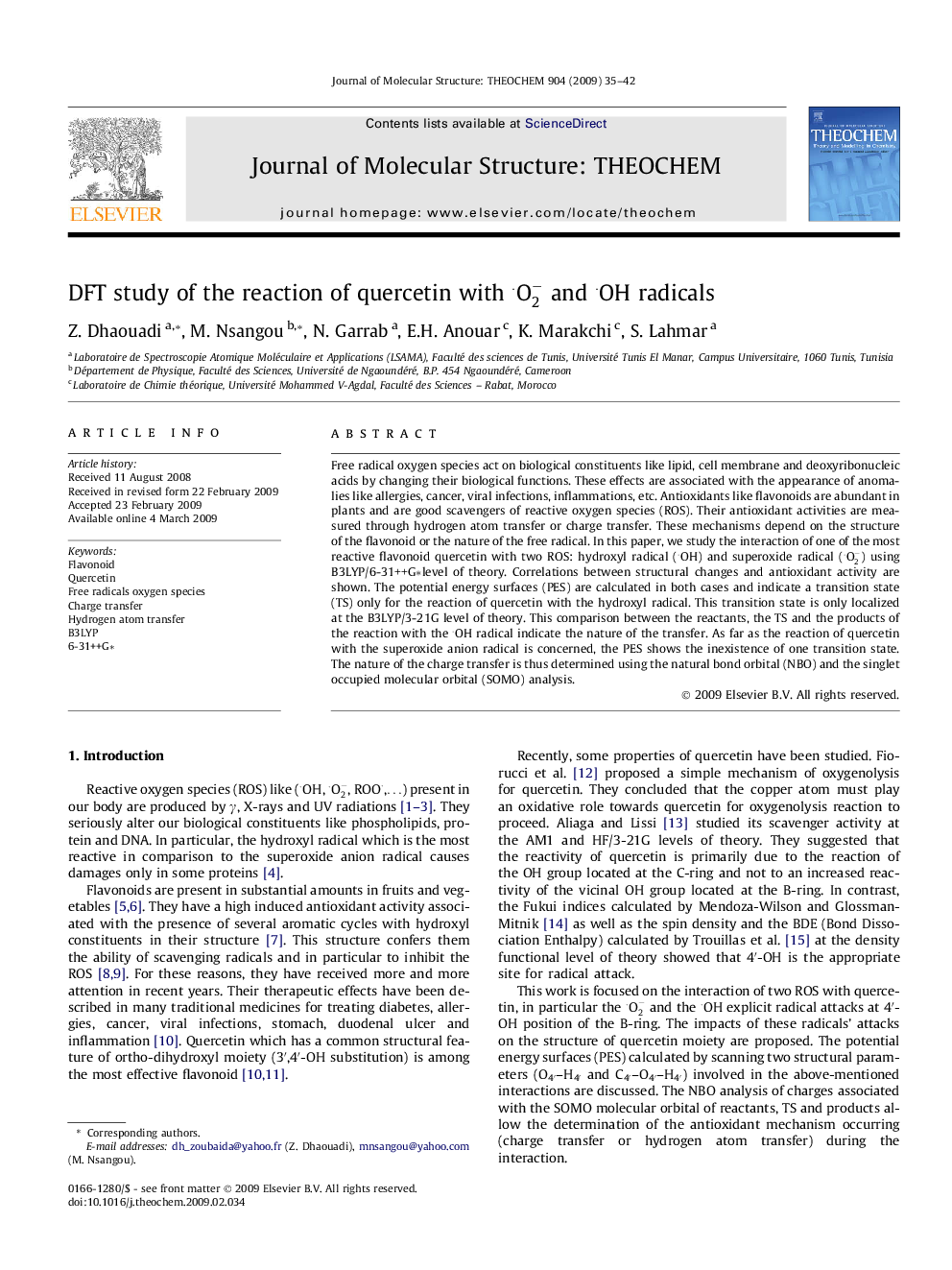| Article ID | Journal | Published Year | Pages | File Type |
|---|---|---|---|---|
| 5417371 | Journal of Molecular Structure: THEOCHEM | 2009 | 8 Pages |
Abstract
Free radical oxygen species act on biological constituents like lipid, cell membrane and deoxyribonucleic acids by changing their biological functions. These effects are associated with the appearance of anomalies like allergies, cancer, viral infections, inflammations, etc. Antioxidants like flavonoids are abundant in plants and are good scavengers of reactive oxygen species (ROS). Their antioxidant activities are measured through hydrogen atom transfer or charge transfer. These mechanisms depend on the structure of the flavonoid or the nature of the free radical. In this paper, we study the interaction of one of the most reactive flavonoid quercetin with two ROS: hydroxyl radical (·OH) and superoxide radical (·O2-) using B3LYP/6-31++G*level of theory. Correlations between structural changes and antioxidant activity are shown. The potential energy surfaces (PES) are calculated in both cases and indicate a transition state (TS) only for the reaction of quercetin with the hydroxyl radical. This transition state is only localized at the B3LYP/3-21G level of theory. This comparison between the reactants, the TS and the products of the reaction with the ·OH radical indicate the nature of the transfer. As far as the reaction of quercetin with the superoxide anion radical is concerned, the PES shows the inexistence of one transition state. The nature of the charge transfer is thus determined using the natural bond orbital (NBO) and the singlet occupied molecular orbital (SOMO) analysis.
Related Topics
Physical Sciences and Engineering
Chemistry
Physical and Theoretical Chemistry
Authors
Z. Dhaouadi, M. Nsangou, N. Garrab, E.H. Anouar, K. Marakchi, S. Lahmar,
